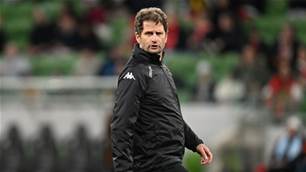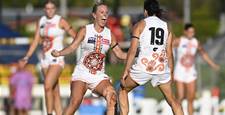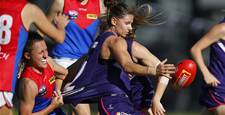Charged with mapping out the future of the women's game in this country, we speak with Leeanne Grantham about the W-League, the FFA and the challenges.
Charged with mapping out the future of the women's game in this country, we speak with Leeanne Grantham about the W-League, the FFA and the challenges.
Leeanne, as the Head of Women’s Football at the FFA, what does your role entail?
Preparing and overseeing the strategic plan for women’s football, in particular the development, sustainability and viability of the Westfield W-League; the preparation of the women’s national teams; the FFA’s relationship with other women’s football bodies in Asia and globally; the focus and value of the development of women in coaching and refereeing roles amongst other things.
What level of support does the FFA provided the Westfield W-League and the Clubs?
The FFA develops the brand proposition, undertakes some research, covers the cost associated with all teams air and ground travel; procures naming rights sponsors, negotiates broadcasting arrangements (ensuring we have a live match each week); provides for suppliers support such as apparel for all teams, match day drinks for teams, the official ball etc; supports several teams with interstate players; prepares the draw all the manuals, policies and procedures, provides support staff to clubs for match days; concentrates on the national marketing and media while the clubs focus on their regions. Provides for support in the grass roots development area; technical development area and many other things.
In setting up the W-League, what lessons were learned from the first years of the A-League?
From what I know of the first year of the A-League, I don’t think the FFA did anything wrong, there are always teething issues and each year of any sporting year, things can be learnt, more importantly we didn’t want to see the W-League end up like the first women’s National Soccer League and close down after a short time.
What we learnt from that was - ensuring clubs were viable, broadcasting was in place, that we had support from the Corporate sector, that the players were keen, the marketing was right, that we were focused on the right customer to help to grow the sport, worked with Federal Government to gain support; ensured that the season was appropriately placed in support of our players achieving competition experience overseas yet enabling them to return to the Westfield W-League.
Gaining the support of the State Institutes where services can be provided to the players and Coaches can be secured who have appropriate qualifications and experience.
That the planning enabled us to improve the quality of our elite players in readiness for the Westfield Matildas. All in all the Westfield W-League is part of a very clear elite pathway for any young girl who wishes to achieve her dream of playing for Australia.
Personally how did you see Season One of the Westfield W-League?
I was pleased with our inaugural season; the FFA had a very short time frame to ensure that Member Federations, Hyundai A-League Clubs and Institutes were prepared to support the commencement of the Westfield W-League. The Federal Government provided some valuable support ensuring that a Live Match per week could be seen by the public.
We had good support from the public with approx. 780 people on average attending every match and over 120,000 viewers each week on the ABC. Our sponsors were thrilled with the season and the professional approach taken by the players and all concerned.
Where can women's football go from here?
Each year we want things to grow and improve. We are keen to see more young girls take up the sport and realize the pathway and opportunities open to them and the league allows them to see this.
Young girls and boys can come to matches and chat to their heroes, they can see the passion on the pitch and listen to it on air with the likes of Cheryl Salisbury (the most capped player in Australia and one of the best players in the world).
One of our biggest hurdles is to gain the exposure women’s football deserves, in fact women’s sport deserves, being more media coverage. This helps to build the awareness; it assists in encouraging young girls to take up sport, to appreciate the opportunities and to see the benefits of not only sport but playing in a ‘team’.
It highlights the value of women’s football to the corporate and Gov sectors. It is a tough one, but nevertheless a very valuable and important part of any successful sport.
It is an exciting time for Football with the Qantas Socceroos going off to the World Cup next year, our bid to host the 2018 or 22 World Cup and the Westfield Matildas preparing for World Cup Qualification in May 2010.
Leeanne, thank you for your time.
Related Articles

'Timing not right': Montemurro's verdict on Matildas vacancy
.jpg&h=172&w=306&c=1&s=1)
Matildas star ready for epic return after 'really difficult' journey













